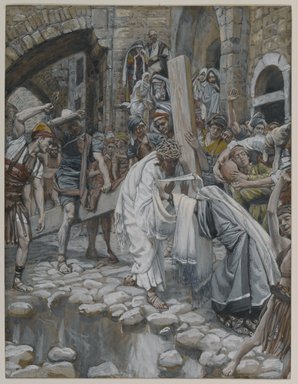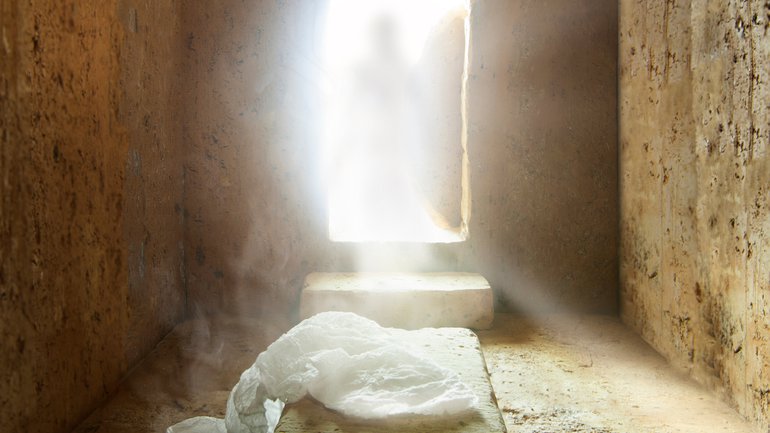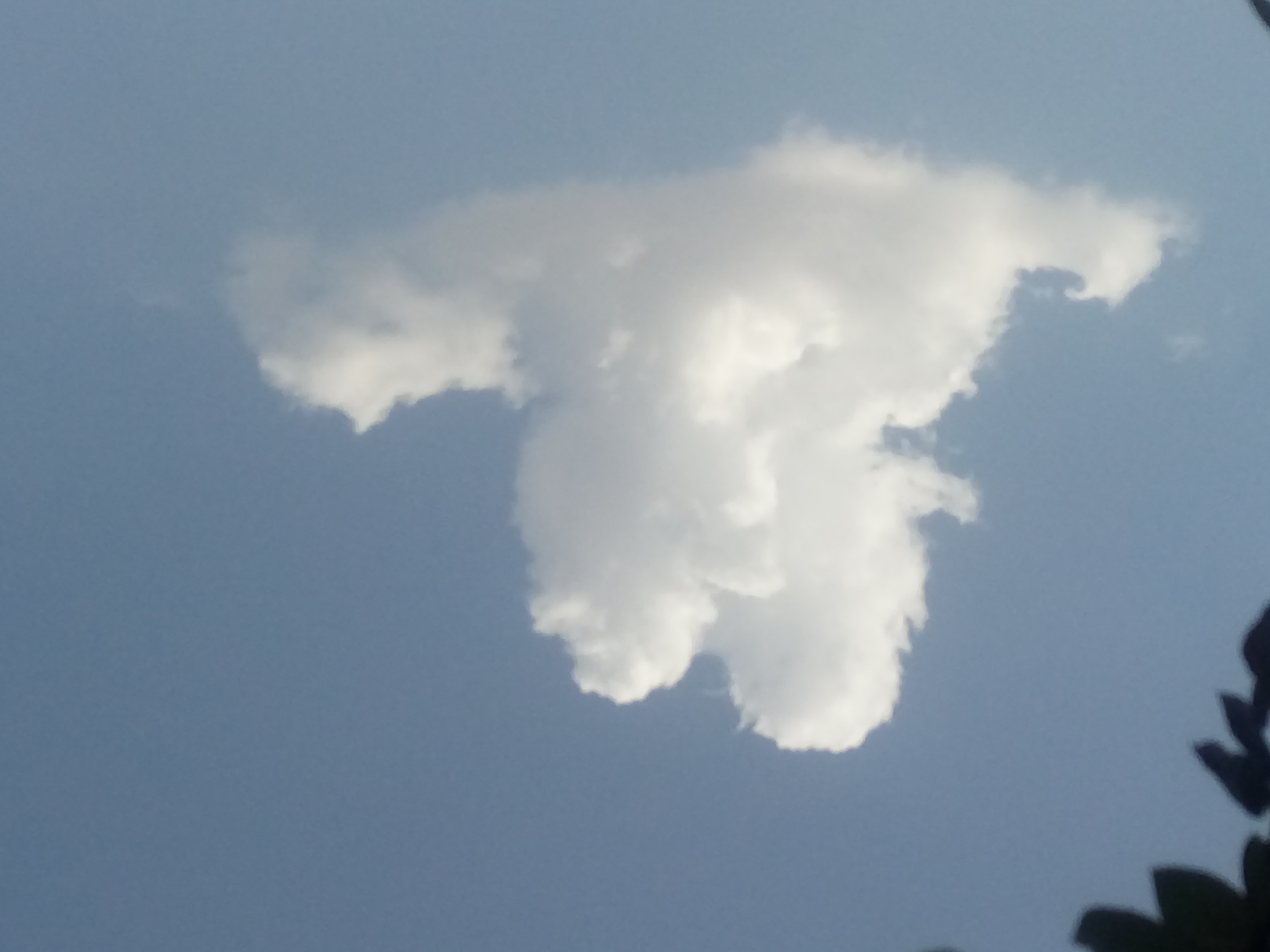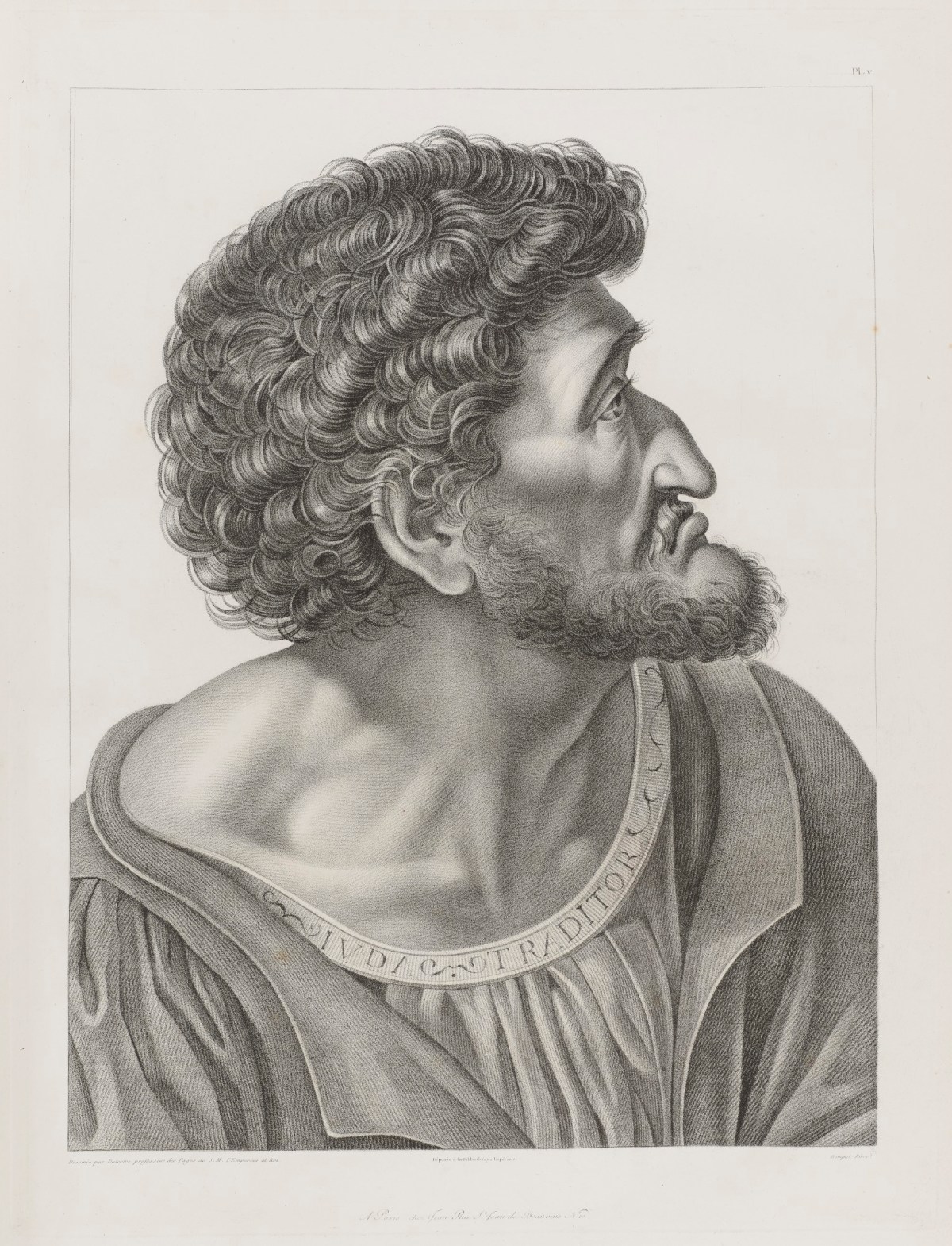As Jesus continues on his route to Calvary, a woman now known as Saint Veronica approaches to offer momentary respite. Kneeling before Jesus, she gives him linen to wipe his face of the sweat and blood from his exertions and wounds. Taking the cloth in both hands, he presses it to his face, leaving a likeness of his features, which Veronica cherished as a memorial to him. In his commentary, Tissot notes that this relic was later taken to Rome for safekeeping by the Church.

The first scientific research was conducted by professor Donato Vitore from the Faculty of Medicine at the University of Bari in the years 19981999. The Veil was digitally scanned with a high definition scanner. Professor Vitore discovered that spaces between each thread of the weft and warp did not contain any remnants of dye. This led him to conclude that the Face had not been made with the use of oil paint or water-colour techniques. The outline of the image is sharp, which is especially noticeable in the parts showing the eyes, the mouth and the hair. Lines are not fuzzy, which would be visible in case water-colour were used.
In 2004 a hypothesis was coined which assumed that the fabric is made from sea silk. Such fabric is not suitable for painting on as its fibres have a smooth and impermeable structure so they do not absorb any liquid. Therefore, had the Image been painted, the only places of pigments concentration would be the spaces between fibres and researched showed they were not there. It is true that the natural dark brown colour of byssus may be changed to honey with the use of weak acids (e.g. by soaking it in citric acid). However, techniques which allow to make a detailed picture by decolourising the fabric are not known these days.
Microscopic structure of the fabric in which each thread is composed of 60 fibres of 14 μm on average, which makes it exceptionally transparent. Impurities are visible between the threads of the weft and warp. Threads are torn in the place of repeated folding
The subsequent microscopic and spectral research was conducted in 2001 by professor Giulio Fanti of the University of Padua (mechanical and thermal engineering). He confirmed that the fabric was very thin, woven with threads of 120 μm on average in diameter (0.12 millimetres). It is thinner than nylon, a synthetic fabric made in 1945 for the first time. The weaving method is traditional which means it is simple and irregular. There are empty spaces between threads of 150 to 350 μm. Fanti confirmed the research results of 1971 when Bruno Sammaciccia exposed the Veil to a Wood's lamp. Such a portable device, thanks to a built-in filter, emits long-wave ultraviolet light which is invisible to the naked eye. A Wood's lamp is used in the analysis of artworks, e.g. for identifying the retouched spots. Dye pigments fluoresce intensively when exposed to UV. The Image of Manoppello show signs of fluorescence in the top left and right corners where father Clemente di Castelvechcio did the renovation by setting in pieces of silk. Traces of pigments were also found in other parts of the picture. Their presence may be explained by the custom of putting copies against the original in order to sanctify them. The analysis of the Image in infrared light did not show any sketch for the picture or any corrections whatsoever.
Veronica's Veil is a legendary Christian relic. The faithful believe that Veronica from Jerusalem encountered Jesus along the Via Dolorosa on the way to Calvary. When she paused to wipe the sweat (Latin suda) off his face with her veil, his image was imprinted on the cloth. The event is commemorated by one of the Stations of the Cross.


































